Water, the stream of life
In terms of pure physics, scientists continue to marvel at its properties, although it is the simplest of chemical elements. When cooled it becomes denser and sinks. When cooled further it suddenly becomes less dense, at which point it miraculously turns into ice and floats.
When heated, water mysteriously changes form and evaporates into steam. The surface tension of water enables it to climb tall trees, and transport the right amount of oxygen and nutrients to living organisms. Evolutionists know that life arose in this liquid element; a reminder that water and life are synonymous.
On a planetary level, water’s ability to store and lose heat is what drives our weather and the rain cycle. Rainwater flows downhill into the sea, and evaporates into the atmosphere to form clouds. Rain then falls back to earth to feed the river system. It is this hydrosphere, the earth’s water system, that keeps us alive.
When we drink a glass of water, few of us realise that the H2O molecules were created millions of years ago, having taken part in the endless rain cycle.
Earth is a living entity, much like our bodies. Our blood circulation system is a river of life flowing through us. This is similar to the river system flowing across the Earth. Our arteries are like fast flowing rivers, veins like streams and capillaries like wetlands. Like blood, water transports oxygen and nutrients, removes waste and toxins, cleanses and heals. If left to itself, our water system would continue to cleanse, nourish, heal and renew life.
The human factor
As long as humans have walked the planet and sailed the seas, we have placed demands on our water system. Six billion active humans swarming across a planet of this size cannot fail to have an impact on the hydrosphere. Besides overfishing the sea and using it as a dumping ground, we have overfished and polluted lakes, diverted and blocked the flow of rivers, built dams, and used water for cheap waste disposal and for transport.
The industrial age has been even harder on water. The collective ‘we’ have destroyed wetlands, disrupted underground water and neglectfully poured millions of tons of chemicals, pesticides, and human waste into our river and dam systems. According to many top scientists and engineers, nuclear disasters such as Fukushima have contaminated the oceans.
The quality of our water system has been sacrificed on the altar of profit, progress, power production and cheap disposal of industrial waste and municipal sewage.
Future generations will pay the downstream price for this exploitation and abuse.
Domino effect
One may be forgiven for believing that the terrible imbalances humans have inflicted on the planet are behind the severity of the current drought.
Most of us grasp the concept of the tipping point; but when does a tipping point turn into a domino effect?
Every environmentally aware citizen must be aware of destructive events that seem to be multiplying at an increasing pace, each event destabilising the next.
Besides polluting the air, the sea, fresh water and the soil, the collective ‘we’ are using fossil fuels at a rate that is undermining the very conditions that made life possible on this rare planet in the first place.
If humanity continues to abuse the delicately balanced ecosphere, whether through greed or ignorance, the planet will no doubt survive. However, for humanity, things will fall apart. Degradation is already underway and will continue until corrective action is taken. Without exaggeration, our very survival as a species is at stake.
Conservationist and author Gerald Durrell put it more bluntly: “Erosion, desertification and pollution have become our lot. It is a weird form of suicide. We are bleeding the planet to death.”
It is becoming increasingly urgent to re-assess the health of our planet and the tenuous life-support ecosystem of which we form an inextricable part. What we do to the planet, we do to ourselves.
Fresh water, a global view
The facts surrounding the scarcity of fresh water are cause for concern. Only 2.5% of the total amount of water on earth is fresh, clean, drinkable water. Most of this (70%) is trapped in the form of polar ice, snow, permafrost or underground. In other words, stored water exists, if at a cost. Towing an iceberg to a thirsty country, mooted years ago, is no urban legend and could become a future scenario.

But what of our flowing, freely available, surface water?
Research reveals that lakes, dams and rivers form less than 1% of fresh surface water on earth, yet this precious resource is becoming increasingly polluted and a health hazard. We are muddying the very waters that sustain us, and the health implications are already proving fatal. Protecting fresh water is a collective responsibility, and goes straight to the heart of each one of us. We may fool ourselves, but can never cheat nature.
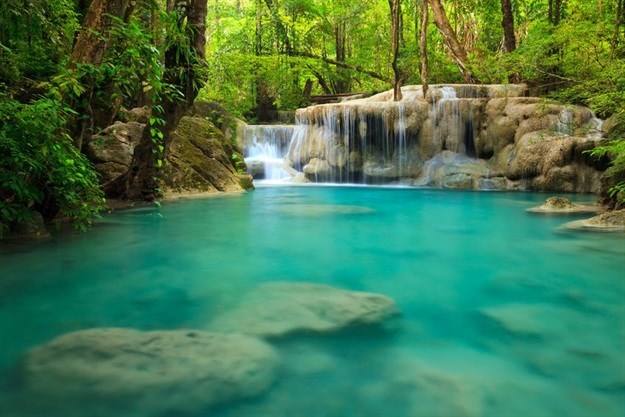
Water, a life giving element
Water is a rare planetary element not to be taken for granted. A substance to be honoured and respected, as it was in the rituals of our ancestors who had the wisdom to give thanks for what gave them life. They knew that water was a precious element.
85% of Africa has been classified as arid, which a UNESCO report puts into perspective: “Almost all of the developing countries [in Africa] are experiencing scarcity of water resources, necessitating the importation of water, desalinisation, and the use of non-renewable water resources. With serious water problems facing 30% of the current population, this proportion is expected to double by 2025”.
The situation is further exacerbated by population growth, economic development, environmental degradation, as well as limitations regarding financial and technical know-how.
Polluted water and Alzheimers
While scientists try to solve one problem, others appear. Scientists now have solid experimental evidence that exposure to cyanobacteria from algae can trigger neuro-degenerative diseases such as Alzheimers, Parkinsons and motor neuron disease.
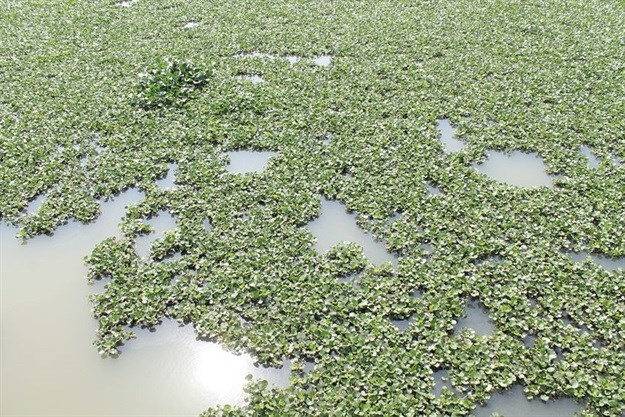
Knowing the link between the quality of food and water, South African food security researcher Florian Kroll explains that due to the state of our rivers and dams, South Africa has one of the highest ‘microcystin’ levels in the world. These are highly toxic peptides which play havoc with the body, causing liver damage and death. More alarming is that our water treatment plants are not designed to deal with these toxins.
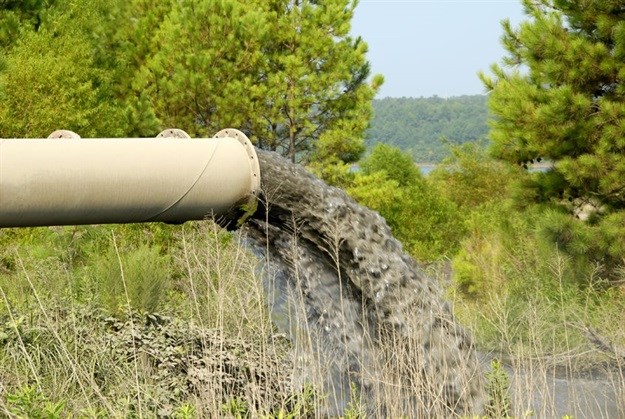
Poorly maintained treatment plants aggravate the situation by allowing sewage into rivers and dams. This combined with phosphates and nitrates from agricultural fertilisers create downstream problems such as water hyacinth and algae. The Hartebeespoort Dam in Gauteng is one example.
The energy- water-food nexus is one interlinked pollution cycle. Coal-fired power stations pollute the air which contaminates the rain cycle, which in turn degrades the soil and affects our food quality. Coal mining itself abuses water. In parts of South Africa, fresh water that lies in aquifers or underground lakes, is now being threatened by acid mine drainage. Fracking in many parts of the world is a further threat to underground water systems.
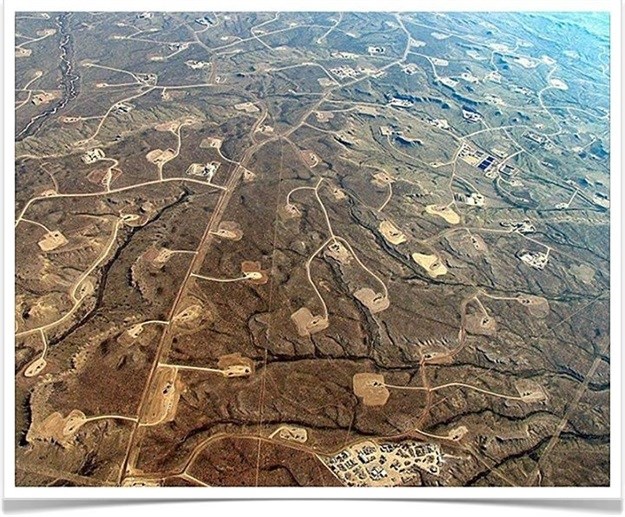
Founder and director of WET-Africa Kim Kieser has been fighting for cleaner rivers and dams for 20 years. WET-Africa focuses on involving the community in keeping South Africa’s rivers clean. For Kieser it is an uphill battle: “My problem is lack of buy-in by corporates. This is surprising as they have much to gain, not only by investing in tax-efficient skills development, but by improving their green profile and their country. However, the true benefit of such investment can be seen in the visible, heartwarming transformation of the rivers and dams, something which benefits communities and the ecology.”
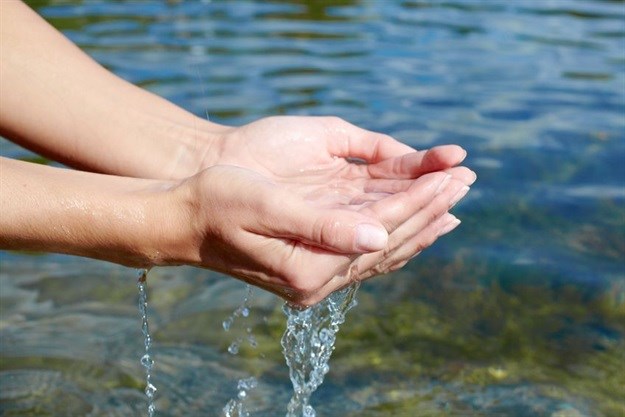
Failing to learn from the past
The current ‘worst ever’ drought is not new. When travelling on the Garden Route recently, I came across a bridge sign that read ‘Droe Rivier’ (Dry River) which said it all. Drought has a long history in South Africa.
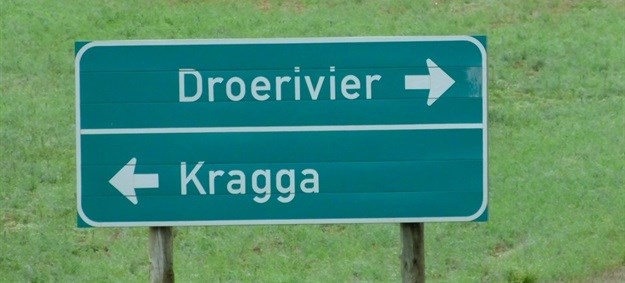
Given climate change on a planetary scale, meteorologists agree that the current drought, and other climatic phenomena such as El Niño, are becoming increasingly difficult to predict, and seemingly more frequent. But it’s not as if we haven’t been warned. There are several publicly available reports where South African experts have predicted the current drought.
Such reports are sophisticated planning tools, and include future scenarios involving food and water. Researchers at the South African Food Lab (Stellenbosch) have done sterling work in this area. If our state departments and municipalities fail to act on the excellent in-depth research that our scientists are delivering, then we have no-one else to blame but ourselves.
Water, survival and health
In a report, called “The Emerging Global Water Crisis: Managing Scarcity and Conflict Between Water Users”, researchers W. Jury and H. Vaux make it clear that the pollution of drinking water by humans has created many problems globally. These researchers pull no punches and explain that such degradation threatens the fast shrinking supply of drinking water and the very survival of the species.
The situation cannot be over-stated. Without water we die within days. Without clean water, the health impact is almost immediate. If the degradation of water continues, the death rate will inevitably rise.
A drought is bad enough. But if this is compounded by inadequate planning, what could be survivable becomes a financial and human disaster.
Corporate environmental non-compliance
Corporate entities, governments, agriculture, energy and pharmaceutical giants refer to water as a ‘resource’, when they should regard it as a living element. As a resource it is consumed, exploited, abused, toxified and eventually destroyed. Nothing is given back.
It is becoming increasingly clear that in many sectors of our competitive society, profit has overtaken ethics. Corporations which deliberately flout environmental regulations, do so for short-term gain ignoring the threat to life. Methods of avoidance are varied and range from blatant disregard of regulations, to the deliberate fabrication of delaying tactics.
Non-compliant entities include multi-national energy corporations, corrupt state departments, the military, multinational agricultural and pharmaceutical giants. All inflict their own brand of degradation on a planetary scale.
Fortunately, those who plunder the earth’s resources are becoming increasingly visible, and the voices of concerned citizens, and the law are growing louder.
The Centre for Environmental Rights (CER) is one impressive organisation that has successfully prosecuted a growing number of directors of non-compliant companies. Attorney and programme head of mining at the CER, Catherine Horsfield, is clear on the subject: “People in the country are dying while they queue for water, and from drinking contaminated water. Yet there is far too little action taken against heavily polluting industries using unauthorised volumes of water - illegally. The result is that this critical resource – to which every South African has a constitutional right – is rendered even more vulnerable. In these desperate times, it is imperative, that the authorities take decisive action against industries that pollute and use water illegally.”
What to do
Given the state of the planet and the high suffering index for all forms of life, it is too easy to fall into paralysing despair. The truth is that environmentally conscious citizens have little option but to take more responsibility for the quality of their food, water and their Earth.
If every person decided to make one small, but healthy change, it would immediately reduce stress on our water system and on the planet as a whole.
Here are some ideas:
- Buy the best water filtration system you can afford to optimise water quality. Alternatively find a clean, natural source of water.
- Keep a store of clean water for those occasions when the water supply fails. Water ‘outages’ will increase.
- Buy non-toxic products and don’t flush damaging chemicals down the drain. Our treatment plants are already not coping.
- Buy organic goods, such as food and clothing. These are free of pesticides, antibiotics, growth hormones and other artificial substances.
- Eat less meat. Besides the cost, meat has the highest carbon footprint of all foods and is associated with the highest level of suffering.
- Buy local. Sourcing food locally is cheaper, healthier and safer, entails a small carbon footprint and supports local farmers.
- If you have a garden, use natural composting and go local. Plant indigenous plants, as they use less water, require less maintenance, are more suited to the environment, are beautiful and attract beneficial birds and insects.
- If you’re a farmer or large rural landowner, you’re in a special position to protect streams, waterways and the soil.
- Become a volunteer or support entities fighting for our health, such as WET-Africa5.
- Save energy. Apart from cost savings, energy efficiency lightens the load on our water systems.
- Reduce and recycle and reuse where possible. This includes packaging, containers and paper printing.
- Spend more recreational time in nature, near natural bodies of water. Birdwatching and photography are examples.
In the end, a healthy environment comes down to greater awareness and taking personal responsibility. Let us not forget what Mother Teresa once said: “Don’t wait for leaders. Do it alone, person to person.”
References:
1. Fresh water statistics: http://www.popline.org/node/298066#sthash.ZQHxeu5P.dpuf
2. A Damon. UNESCO SOURCES. 1996 Nov; (84):12-3 Document Number: 148635
3. Algae and Alzheimers: www.bbc.com/news/health-35350450?ThisFB
4. Florian Kroll. Specialist Researcher (Food) at Wits Siyakhana Initiative.
5. Clean rivers and dams. www.WET-Africa.org
6. SA Food Lab Report: www.southernafricafoodlab.org/uploads/1/5/3/7/15374534/safl/
7. “The Emerging Global Water Crisis: Managing Scarcity and Conflict Between Water Users”. William A. Jury, Henry J. Vaux Jr. Copyright © 2007 Elsevier Inc. from ‘ScienceDirect’
8. Centre for Environmental Rights: www.cer.org.za
About Roger Metcalfe
- [Earth Focus] Water, the stream of life - 11 Feb 2016
- [Earth Focus] The future of food - 17 Dec 2015
- [Earth Focus] Walk on the wild side: thoughts around a campfire - 5 Oct 2015
- [Earth Focus] Solar power: lessons from nature - 15 Sep 2015
- [Earth Focus] Nuclear red. Renewable energy green - 17 Aug 2015
View my profile and articles...